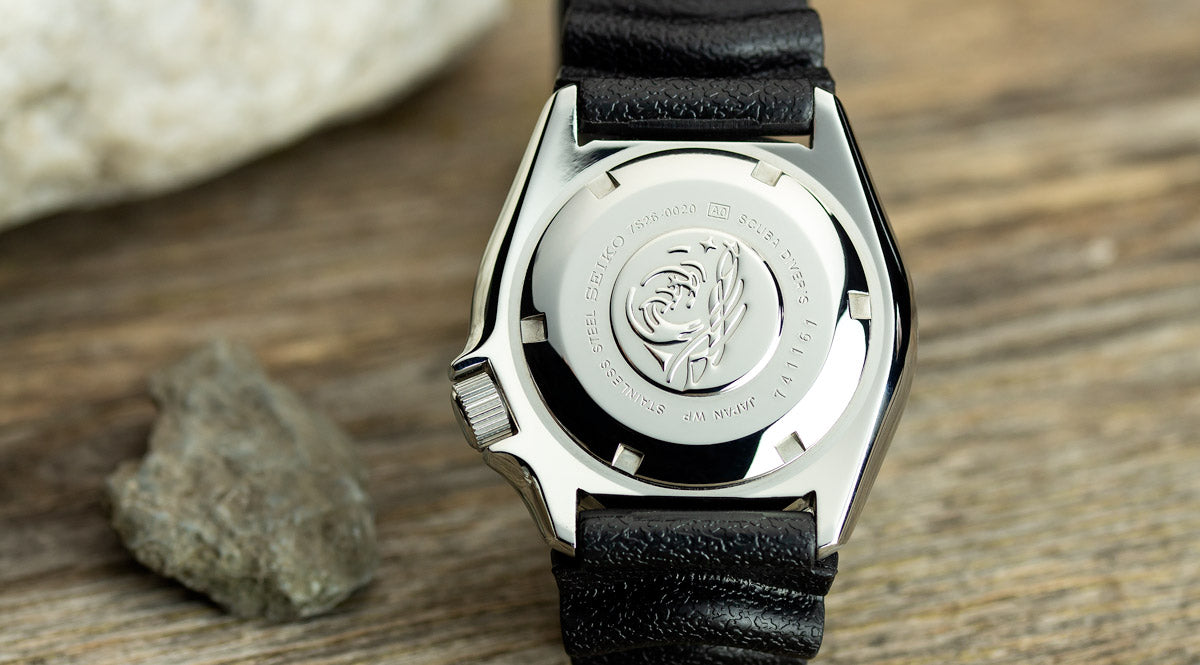What is the difference between the SKXJ and SKXK hands on? Which should I buy? All of these questions answered here!
The Seiko SKX. Whether your preference is the 009, 007 or the smaller 013 it's hard to argue with the value proposition this watch offers. There are many more variations of the SKX out there, but two of the most confusing models are the Seiko SKXK range and the Seiko SKXJ models. At a quick glance these models look exactly the same, however, there are a few subtle differences between the two you need to know before you add THE beater watch to your collection.
So, what is the difference between the SKXK vs SKXJ?

Spot the difference (excluding the Pepsi bezel of course) - The Seiko SKX007K, SKX007J & SKX009J
The most obvious difference is in regards to their model numbers. The J in the SKXJ reference is related to the fact this variation is made in Japan. The country the K references to is somewhat unknown with many people saying it's Singapore, South Korea or Malaysia. There are also mentions online that the J and K also are denoting the market the watch was intended for rather than the origin of manufacture.
Let's break down each feature of the watch and where they differ...
Different dials?

Place your bets now - is this the SKXJ or SKXK?
First up is the dials on each variation. Looking at the two watches side by side, almost everything is the same. There is no difference between handset, indices, seconds track or day date function. The first noticeable difference between the two is the additional text on the SKXJ version.

The Seiko SKXJ Model - featuring a little more text on the dial
The J features the same 'Diver's 200m' in a burnt orange colour, but now with the addition of '21 Jewels' underneath. The SKXK keeps the clean aesthetic with just the 'Diver's 200m' on the dial. The next, and actually the final difference between the SKXJ and SKXK is the additional 'MADE IN JAPAN' at the bottom of the dial on the SKXJ at the 6:30 position.

The SKXK has 7S26- at this position instead, referring to the movement powering the watch. Admittedly, these are very small differences between the models but if there is one thing the watch world teaches us every day, it is that small subtle differences make a surprisingly big difference.
Time to flip the watches over...

The Seiko SKXJ Caseback - towards the bottom of the case back JAPAN WP can be seen
The casebacks on each watch also reveal one small difference. On the SKXJ model, ‘JAPAN WP’ can be seen just to the left of the model number. On the SKXK just WP can be seen again another small difference...but a difference nevertheless.

The caseback of the SKXK only has WP rather than JAPAN...
It's looking more and more that potentially 'Japan' and 'J' is referring to where it's made rather than the rumours of it referring to the market the watch was intended for.

The Seiko SKXJ on the wrist - it's fair to say both K and J models are identical on the wrist
In terms of visible details straight away that is technically the only differences with these watches. There is one other 'difference' myself and a few other members of WatchGecko team picked up on when comparing the SKXK vs SKXJ.
Different finishing?

A closer look at the finishing on the SKXJ
After close examination, it looks like the finishing on the Seiko SKXJ model we have hands-on experience with seems to be slightly sharper with overall higher quality. Looking through a loupe, the finishing looks sharper on the SKXJ and although not necessarily confirmed, the quality of the case feels better.
So on paper, these models are naturally extremely similar with the dial details and increased quality of finishing splitting the two model numbers.
But why is the SKXJ model perceived to be the more desired model number? As I've mentioned previously when talking about my Seiko SARB, Seiko is very well known for keeping the good stuff for themselves.

The Seiko SARB033 - Another example of Seiko keeping all the good stuff within Japan...
Japanese domestic models are almost a completely different subcategory of and culture in itself. Increased quality of finishing, movements used and more interesting models in general normally live their life in Japan.
With the growth of the internet, many dealers have popped up which is why it's possible to get these JDM models quite easily now. You could say the secret is out for Seiko and collectors across the world are all enjoying these 'Japan only' models.
Watch collecting is a perfect example of how the small things, details and slight variations in each model can have a big impact. Look no further than the Rolex Submariner 1680. This standard date Submariner reference currently can be had for around £10,000. This is somewhat of the norm nowadays with vintage Rolex prices on the continual rise. Then take a look at the Red Submariner.

The Rolex Submariner 1680 Standard vs Red Submariner - Image credit BobsWatches
It's the 1680 reference but with the addition of the 'Submariner' text being in red. The price? easily double standard 1680.
So when we relate that to the SKXJ and the addition of '21 Jewels' and 'Made In Japan', it's no wonder the SKXJ is a more desirable model. It's subtle differences like this that watch guys love. It's the same reason why replacement watch straps or modding Seiko watches are so popular. It's all about being unique and different from the rest.
Here are a few of my top best strap suggestions for the SKX (whether you're an SKXJ or SKXK owner).
Simple Handmade Italian Leather - Red and Blue

The Seiko SKX fitted to the Simple Handmade Leather Strap with Red and Blue Pepsi Stitching - Available here!
This is a classic range of leather straps for us. They are extremely versatile and work on a wide range of different watches. The reason this strap is number one on my list is down to the Red / Blue stitching option. This strap option was created specifically for watches that have red and blue features on the watch head, which means its a perfect match for an SKX009 no matter if its the J or K option.
If you're an SKX007 owner, one of the standard brown options would make for a great strap choice as well. The Reddish, Chocolate or Light Brown would be my suggestion.
Vintage Highley in Dusty Black

The Vintage Highley in Dusty Black fitted to the Seiko SKX - available here!
The Highley from our Geckota range is another solid leather option with the added benefit of soft padding around the top of the strap making for an extremely comfortable fit. This strap works best on watches that are a little thicker than others which means it naturally lends itself to watches such as divers.
Beads Of Rice Premium Stainless Steel Strap - Available here!

The SKXK fitted to our Beads of Rice Bracelet with fitted ends - available here on WatchGecko!
Finally, we have an upgrade for the standard jubilee style bracelet that the SKX can be purchased on. Our Beads of Rice bracelet is a style made popular by diving watches dating back commonly to the 60s. Since then it has seen continued popularity and in recent years (with the growth and appreciation of traditional watchmaking) has become very popular.
Our Beads of Rice bracelet is a solid option with deployment buckle with fold over lock safety. We also offer ends for the strap which perfectly fit the SKX case, meaning you can really complete the old school look.

The Seiko SKXJ vs SKXK - Which is your preference?
The Seiko SKXJ or SKXK. For me, I'd go for the SKXJ. It has all the benefits of the popular standard SKXK but with some nice little nuances which set it apart. However, the SKXK is very obtainable and realistically if you want a watch you can pick up and go with, the SKXK is a solid option. Are you an owner of the SKXJ? Do you think there is a noticeable difference? Let us know in the comments below!





